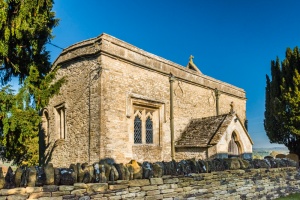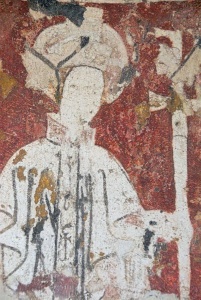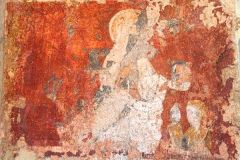Richard Lutz dips into African theatre twice and finds a lost church.
credit: Ellie Kurttz
And off to the theatre. In the past week, I have taken in the rich stream of African theatre; both telling, both intriguing, both different.
At the the Royal Shakespeare Company’s Swan Theatre in Stratford, Anthony Sher shared the stage with playwright John Kani (as above) in a testy and funny two hander called Kunene and the King.
Sher lit up The Swan as a cranky actor about to do his King Lear bit. He has terminal cancer and a nurse, played by Kani, comes to care for the old sot. Yes, it’s a metaphor about race, colonialism and inbred distrust (on both sides). But it is also a deeply human story with kindness and brotherly love tinging this story about the troubles of South Africa.
The production sits interestingly alongside The Half God of Rainfall, which just ended its run at the Birmingham Rep. There is a contrast. Writer Inua Ellams takes on the big story, a contemporary allegory about an epic life of a half god born after the Greek god Zeus rapes a woman in Nigeria. The child is destined for greatness. But can he take on successfully the will of the gods? I gave it a lukewarm review last week. But when I compared it to the Sher/Kani RSC show, I re-assessed and accept that both portray sub-Saharan Africa in a creative and vibrant differing light.
 Out of the dark of the theatre to the light of the Cotswolds. Once out of the honeypots of tour buses and twee (and expensive) tea shoppes, it is all fields and sky. All Saints Church sits quietly above the green awakening Evenlode Valley. Writer Simon Jenkins called it “…Oxfordshire’s most secret place.”
Out of the dark of the theatre to the light of the Cotswolds. Once out of the honeypots of tour buses and twee (and expensive) tea shoppes, it is all fields and sky. All Saints Church sits quietly above the green awakening Evenlode Valley. Writer Simon Jenkins called it “…Oxfordshire’s most secret place.”
It is ancient, an 800 year old peek into the past.
 Inside is a treasure of wall paintings. I never heard of minor figures depicted on the old walls such St Loy and St Zita. And on the west wall, a tail of a green dragon, possibly from a portrait of St George fighting the good fight.
Inside is a treasure of wall paintings. I never heard of minor figures depicted on the old walls such St Loy and St Zita. And on the west wall, a tail of a green dragon, possibly from a portrait of St George fighting the good fight.
 Happily, it is still used by locals as it sits next to a working farm in the emptiness of Shorthampton hamlet, which you just may not find on any map. No empty monument to England’s stormy story is this church. It’s still used according to the bustling calendar of events. Locals still troop (or I guess drive) to its remote location south of Chipping Norton to take in the exploding spring fields, the big sky, the rippling wolds and the hints of pictures painted by unknown medieval hands.
Happily, it is still used by locals as it sits next to a working farm in the emptiness of Shorthampton hamlet, which you just may not find on any map. No empty monument to England’s stormy story is this church. It’s still used according to the bustling calendar of events. Locals still troop (or I guess drive) to its remote location south of Chipping Norton to take in the exploding spring fields, the big sky, the rippling wolds and the hints of pictures painted by unknown medieval hands.



